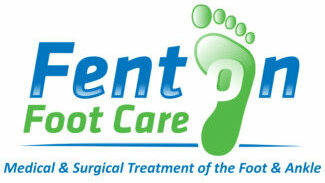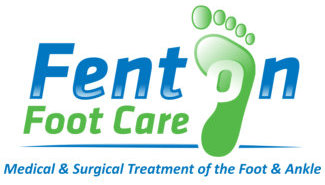Skin cancers in the leg and foot have a very different appearance from those found in the rest of the body. For this reason, a podiatrist’s knowledge and training is very important for early detection and treatment. A skin biopsy is commonly used to help diagnose skin cancer. It is a simple procedure where a small sample of the skin lesion is obtained and then sent to a lab for detailed testing.
Skin cancers of the feet have several features in common. Most are painless and often have recurrent cracking, bleeding, or ulceration. Basal cell carcinoma is frequently seen on sun exposed skin surfaces such as the tops of feet. It causes local damage but very rarely spreads beyond the skin. Basal cell cancers appear as pearly white bumps or patches which may ooze or crust. Squamous cell carcinoma is the most common form of skin cancer of the feet. Most types are confined to the skin and will not spread. However, when this type reaches an advanced form, it can become more aggressive and spread throughout the body. Squamous cell carcinoma typically begins as a small scaly bump or plaque with red boarders that may be itchy. Malignant melanoma is one of the most deadliest skin cancers known. It can be found beneath a toenail, soles, and tops of the feet. As a melanoma grows, it extends deeper into the skin, becoming more serious. This skin cancer commonly starts as a small brown-black spot or bump that resembles a common mole.
The ABCDs of skin melanoma are used to determine if a mark on the skin is cancerous. They are to be used as a test at home before seeking a physician’s opinion. If one of more of the ABCDs is present, it is important to visit a physician.
Asymmetry- If the skin mark is divided in half, the sides don’t match
Borders- They look scalloped, uneven, or ragged.
Color- The skin may have more than one color and be unevenly distributed.
Diameter- The skin lesion can appear wider than pencil eraser.
For other types of skin cancer look for impulsive ulcers, non-healing sores, bumps that crack or bleed, nodules with rolled edges, or distinct scaly areas.


